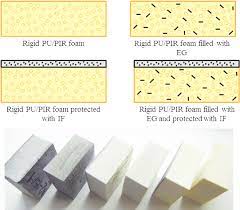
The Versatility and Benefits of Rigid Polyurethane Foams
Rigid polyurethane foams are a versatile and widely-used material in various industries due to their exceptional properties and applications. These foams are created by mixing two liquid components – polyol and isocyanate – which react to form a rigid structure filled with closed cells. The resulting foam has excellent thermal insulation, high strength-to-weight ratio, and good chemical resistance.
Applications of Rigid Polyurethane Foams
Rigid polyurethane foams find extensive use in the construction industry for insulating roofs, walls, and floors of buildings. Their high insulating properties help reduce energy consumption by maintaining indoor temperatures efficiently. Additionally, these foams are used in refrigeration units, transportation vehicles, and appliances to provide thermal insulation.
Benefits of Rigid Polyurethane Foams
One of the key advantages of rigid polyurethane foams is their superior thermal insulation properties. They help in reducing heat transfer, thereby improving energy efficiency in buildings and appliances. These foams also offer structural support due to their high compressive strength, making them ideal for load-bearing applications.
Sustainability Considerations
Manufacturers are increasingly focusing on developing eco-friendly formulations for rigid polyurethane foams to reduce environmental impact. By using bio-based raw materials and improving production processes, the industry aims to create sustainable solutions that meet performance requirements while minimizing carbon footprint.
Conclusion
Rigid polyurethane foams play a crucial role in modern industries by providing superior insulation properties, structural support, and versatility in applications. As technology advances and sustainability becomes a key focus, the development of innovative formulations will further enhance the benefits of these foams while reducing their environmental footprint.
4.
- What is polyurethane rigid foam?
- What is polyurethane foam used for?
- What is the difference between rigid and flexible PU foam?
- What is PE PUR foam used for?
What is polyurethane rigid foam?
Polyurethane rigid foam is a type of foam material that is created by mixing polyol and isocyanate components, which react to form a rigid structure filled with closed cells. This foam material is known for its excellent thermal insulation properties, high strength-to-weight ratio, and good chemical resistance. Polyurethane rigid foams find widespread applications in industries such as construction, refrigeration, transportation, and appliances due to their ability to provide efficient insulation and structural support. The versatility and benefits of polyurethane rigid foam make it a popular choice for various applications where thermal insulation and durability are essential.
What is polyurethane foam used for?
Polyurethane foam is a versatile material with a wide range of applications across various industries. One common use of polyurethane foam is for insulation purposes in buildings, appliances, and transportation vehicles. Its excellent thermal insulation properties help in conserving energy by maintaining desired temperatures efficiently. Additionally, polyurethane foam is utilized in cushioning and padding applications, such as in furniture, mattresses, and automotive seats, due to its ability to provide comfort and support. The material’s versatility extends to soundproofing, packaging, and even flotation devices, showcasing its adaptability and utility in diverse settings.
What is the difference between rigid and flexible PU foam?
When comparing rigid and flexible polyurethane foams, the key difference lies in their structural properties and intended applications. Rigid polyurethane foams are characterized by their closed-cell structure, providing high compressive strength and thermal insulation. These foams are commonly used in construction, appliances, and transportation for their load-bearing capabilities and energy efficiency. On the other hand, flexible polyurethane foams have an open-cell structure that allows for flexibility and softness, making them suitable for cushioning materials in furniture, bedding, and automotive seating. While both types of polyurethane foams offer unique benefits, their distinct compositions cater to specific requirements in various industries.
What is PE PUR foam used for?
PE PUR foam, also known as polyethylene-polyurethane rigid foam, is commonly used for insulation purposes in various industries. Its unique combination of polyethylene and polyurethane materials provides excellent thermal insulation properties, making it ideal for applications such as insulating walls, roofs, floors, and refrigeration units. PE PUR foam is lightweight yet durable, offering high compressive strength and resistance to moisture and chemicals. Its versatility makes it a popular choice for construction projects, transportation vehicles, appliances, and other structures where effective insulation is essential for energy efficiency and performance.
